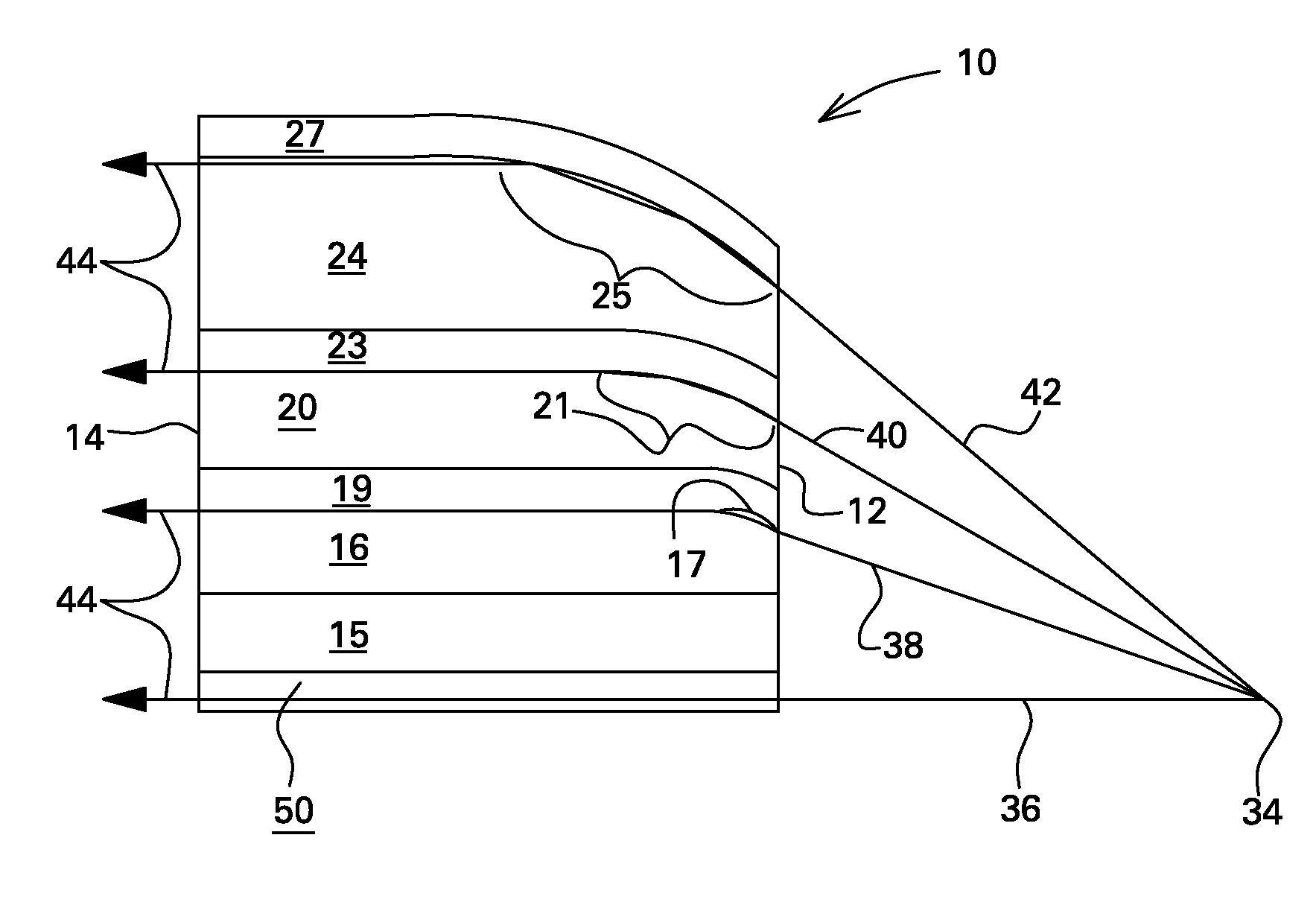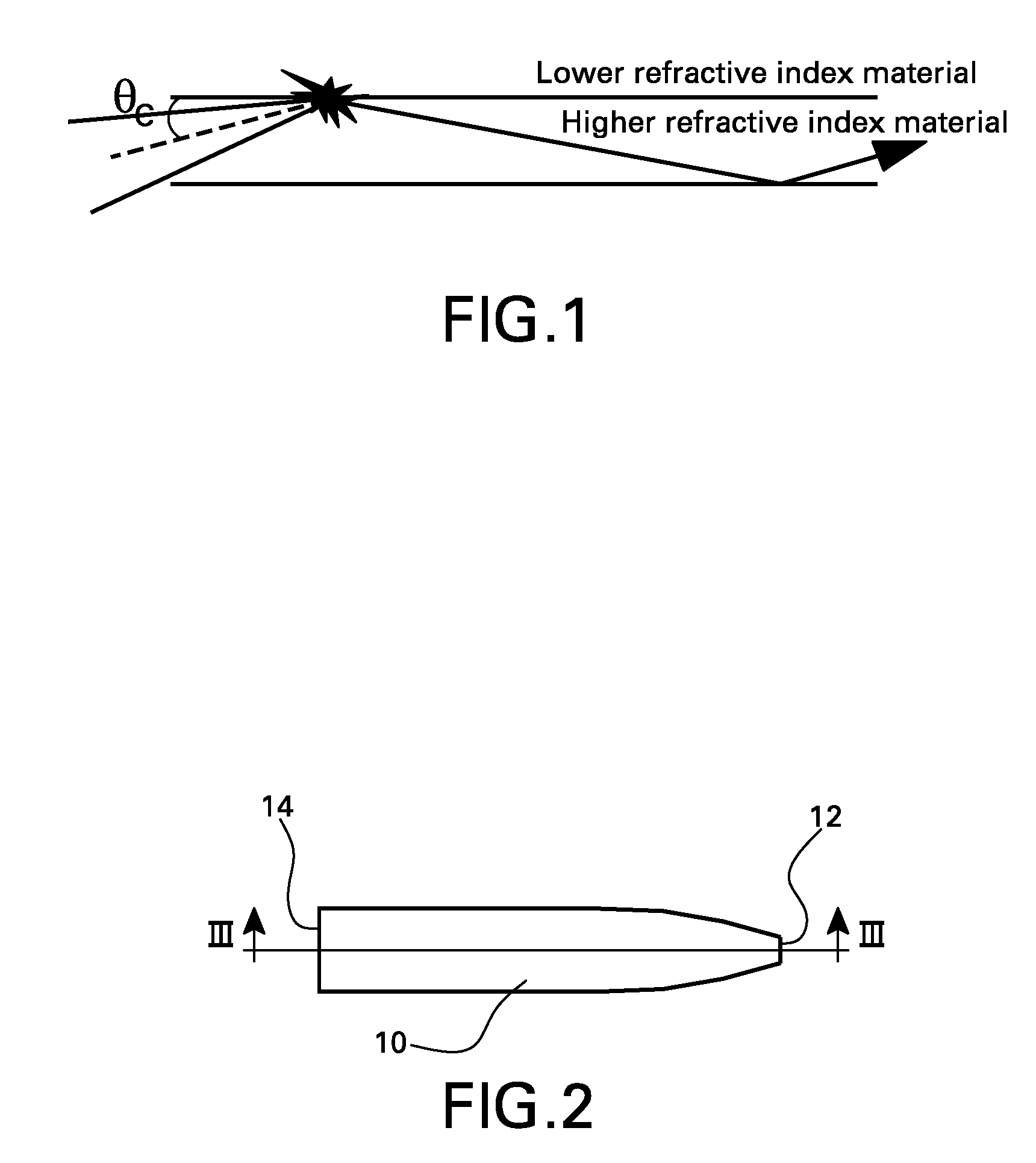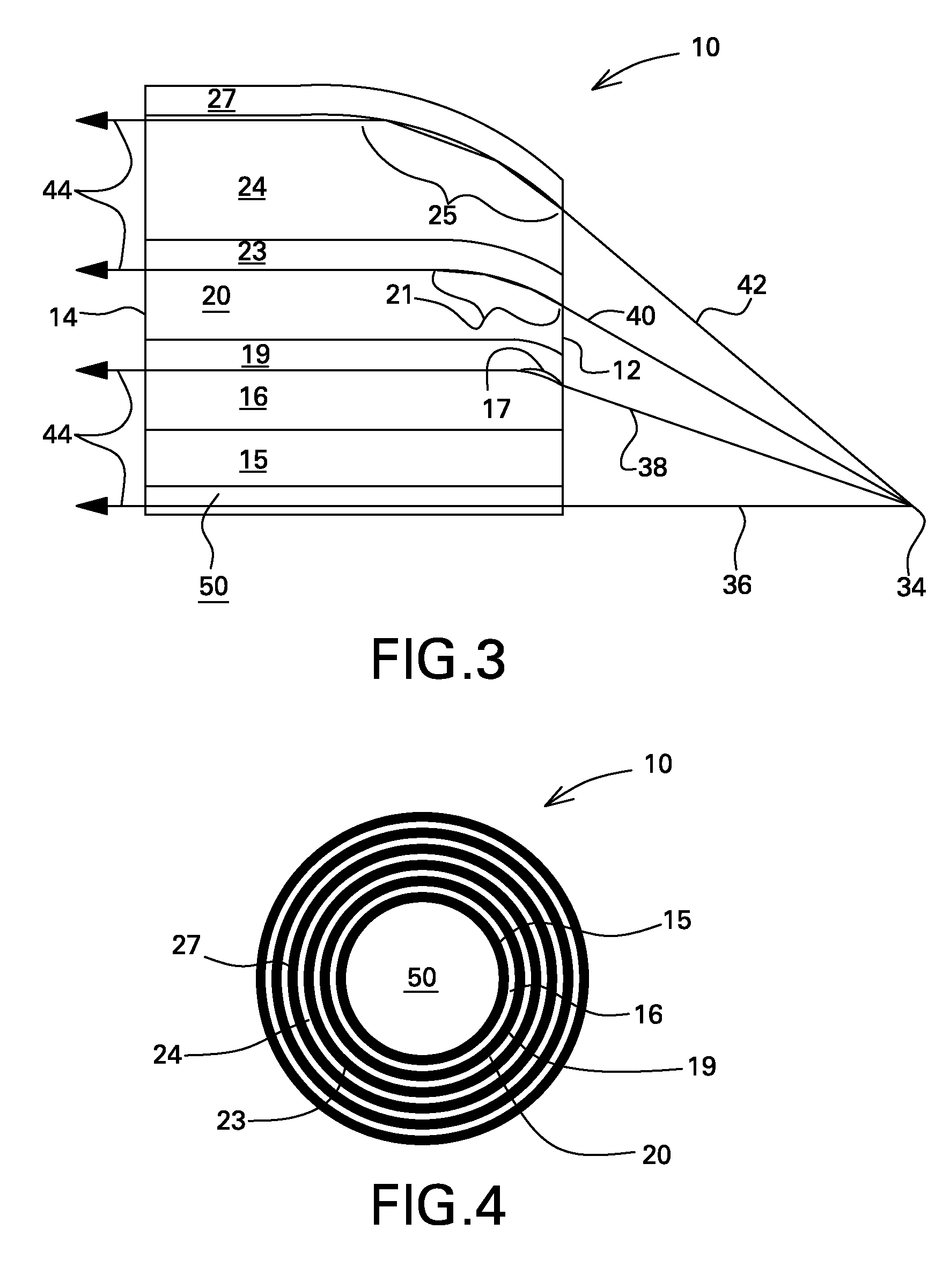Multi-energy imaging system and method using optic devices
a multi-energy imaging and optic device technology, applied in the field of optics, can solve the problems of low detection accuracy, low detection accuracy, and low detection accuracy of edxrd systems
- Summary
- Abstract
- Description
- Claims
- Application Information
AI Technical Summary
Problems solved by technology
Method used
Image
Examples
Embodiment Construction
[0035]Embodiments of the invention described herein primarily utilize the phenomenon of total internal reflection. Referring to FIG. 1, when an angle of incidence is less than a critical angle θc, total internal reflection occurs. The critical angle θc for total internal reflection depends on, among other factors, the selection of materials, the difference in the relative indices of refraction between the materials, the material photon absorption properties, and the energy of the incident photons. By appropriate material selection in the multilayer optic described herein, the critical angle θc can be increased several times over an air-glass critical angle, allowing many more photons to satisfy the condition for total internal reflection. This will allow a greater photon transmission through a multilayer optic than is possible with, for example, polycapillary optics.
[0036]Referring now to FIGS. 2-5, there is shown a multilayer optic 10 including an input face 12 and an output face 1...
PUM
 Login to View More
Login to View More Abstract
Description
Claims
Application Information
 Login to View More
Login to View More - R&D
- Intellectual Property
- Life Sciences
- Materials
- Tech Scout
- Unparalleled Data Quality
- Higher Quality Content
- 60% Fewer Hallucinations
Browse by: Latest US Patents, China's latest patents, Technical Efficacy Thesaurus, Application Domain, Technology Topic, Popular Technical Reports.
© 2025 PatSnap. All rights reserved.Legal|Privacy policy|Modern Slavery Act Transparency Statement|Sitemap|About US| Contact US: help@patsnap.com



